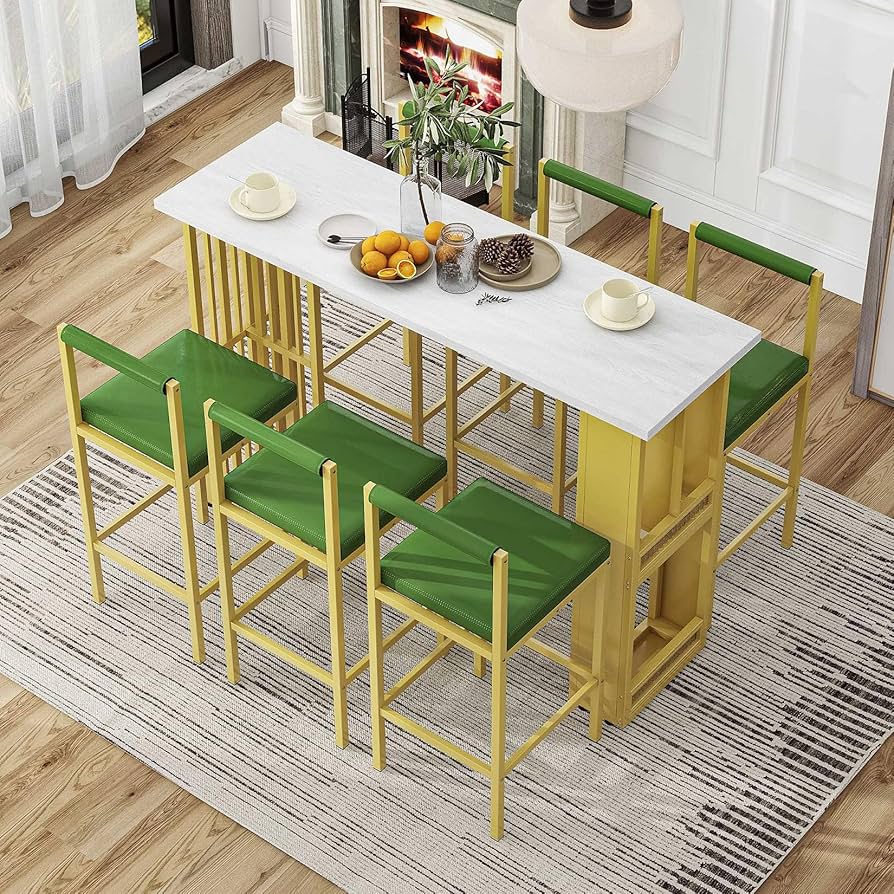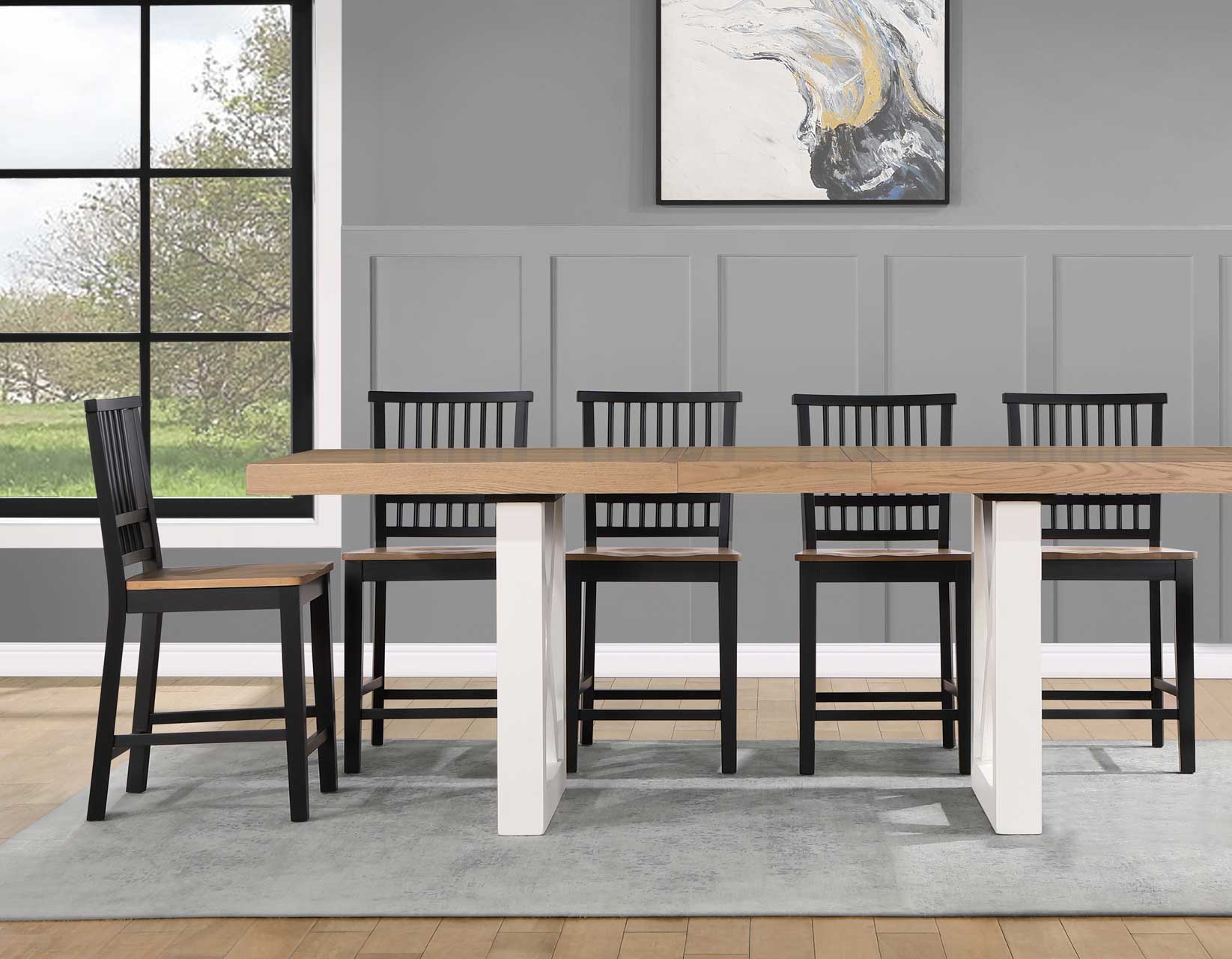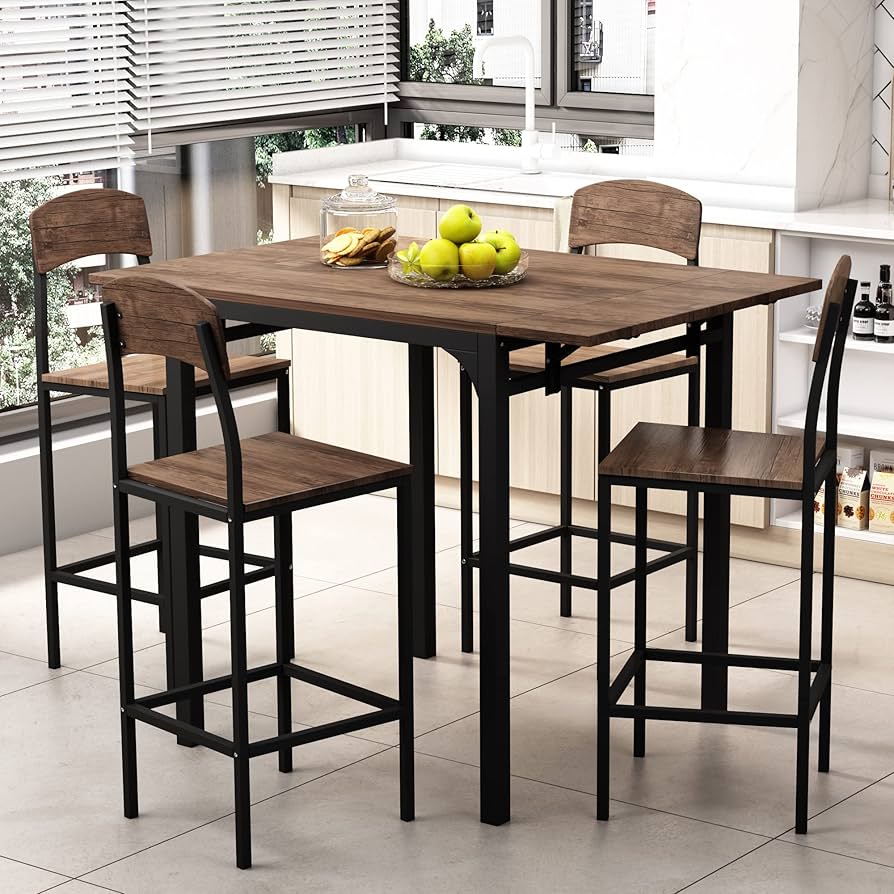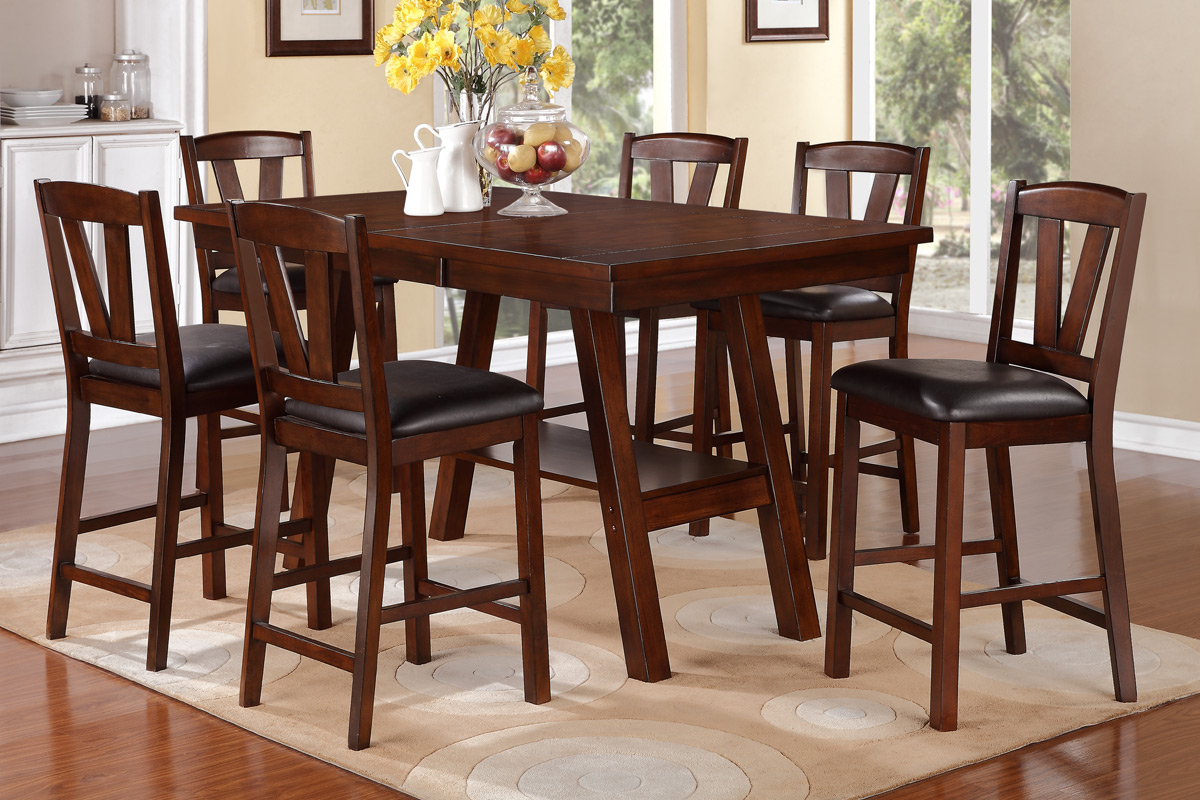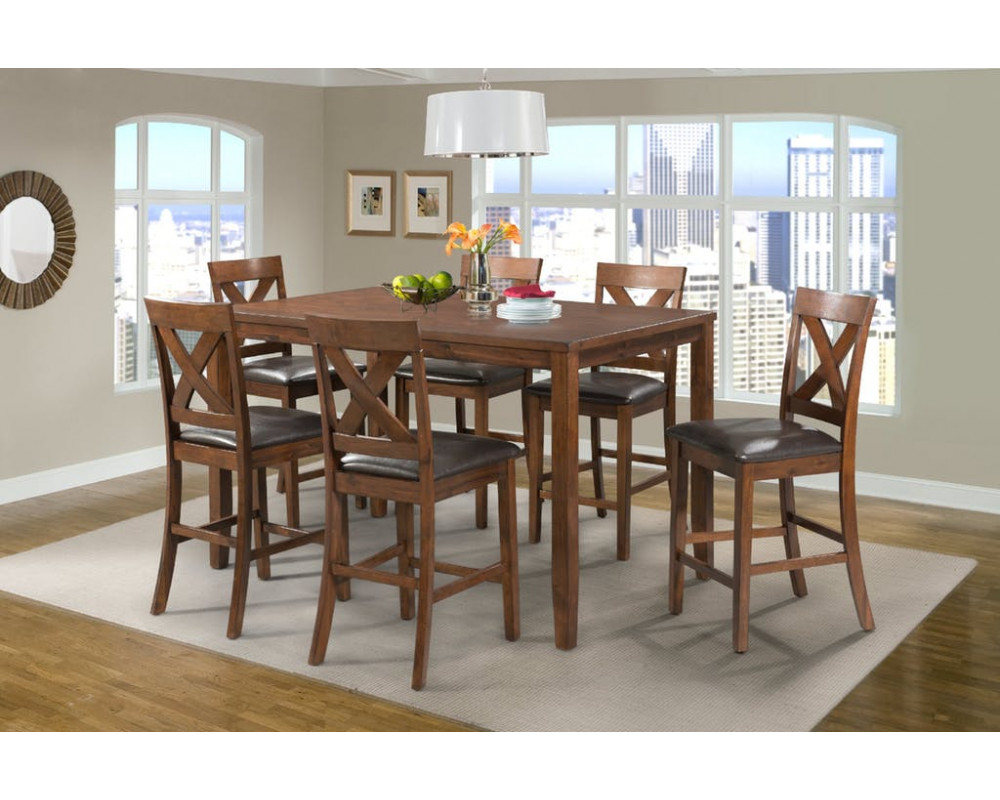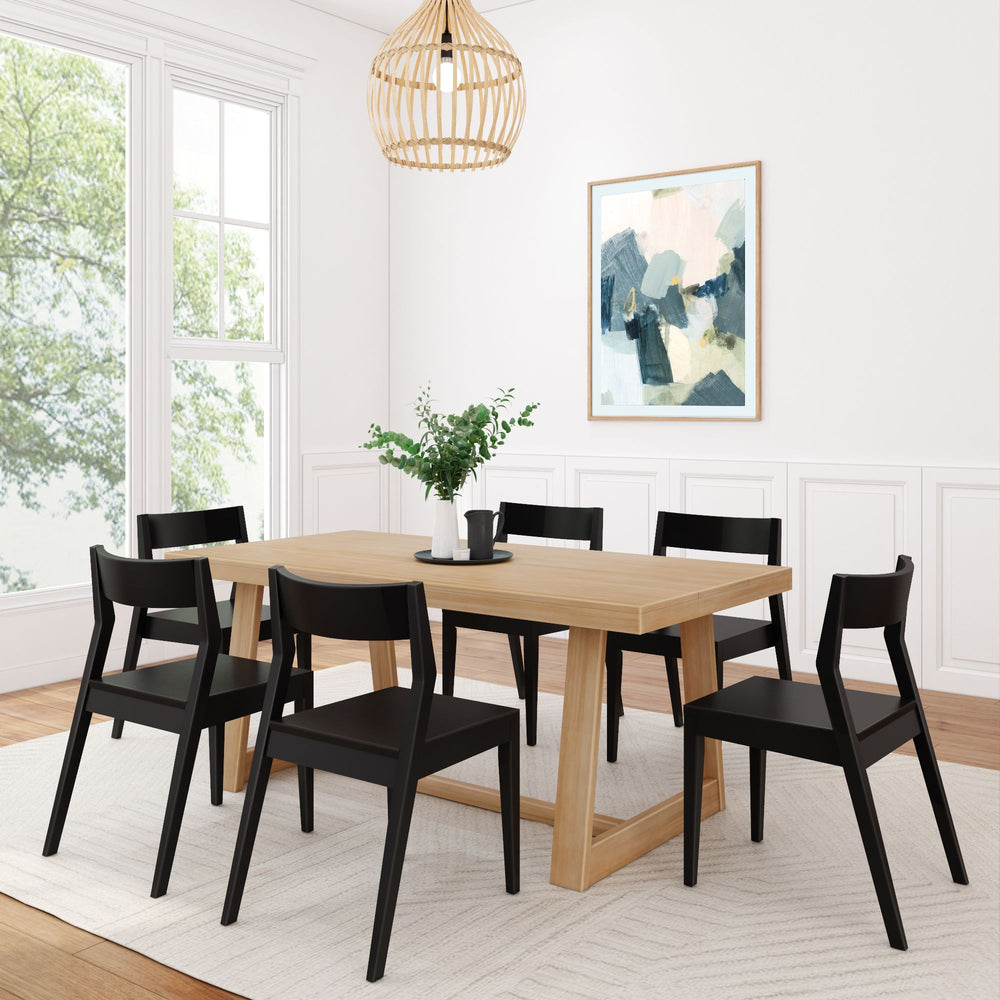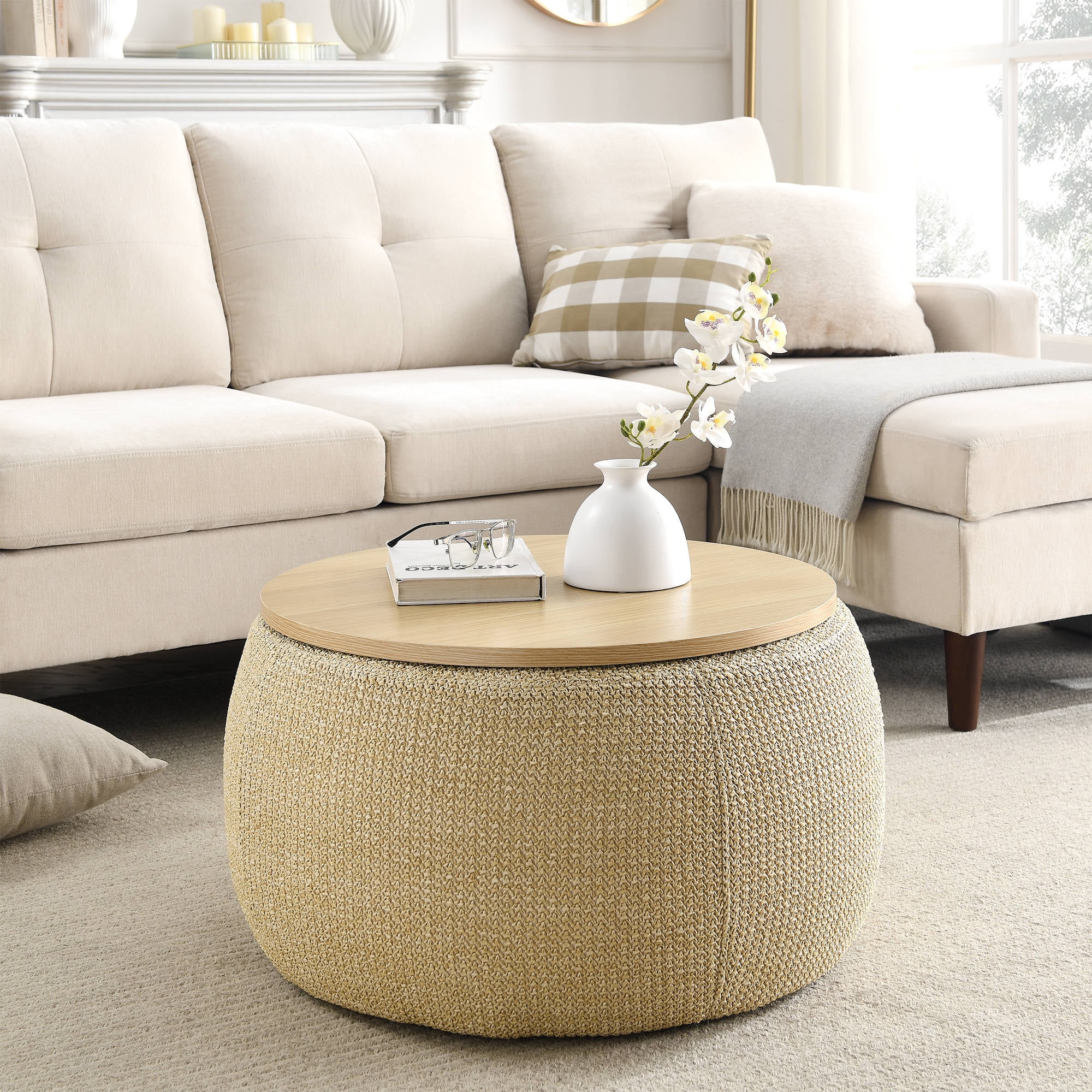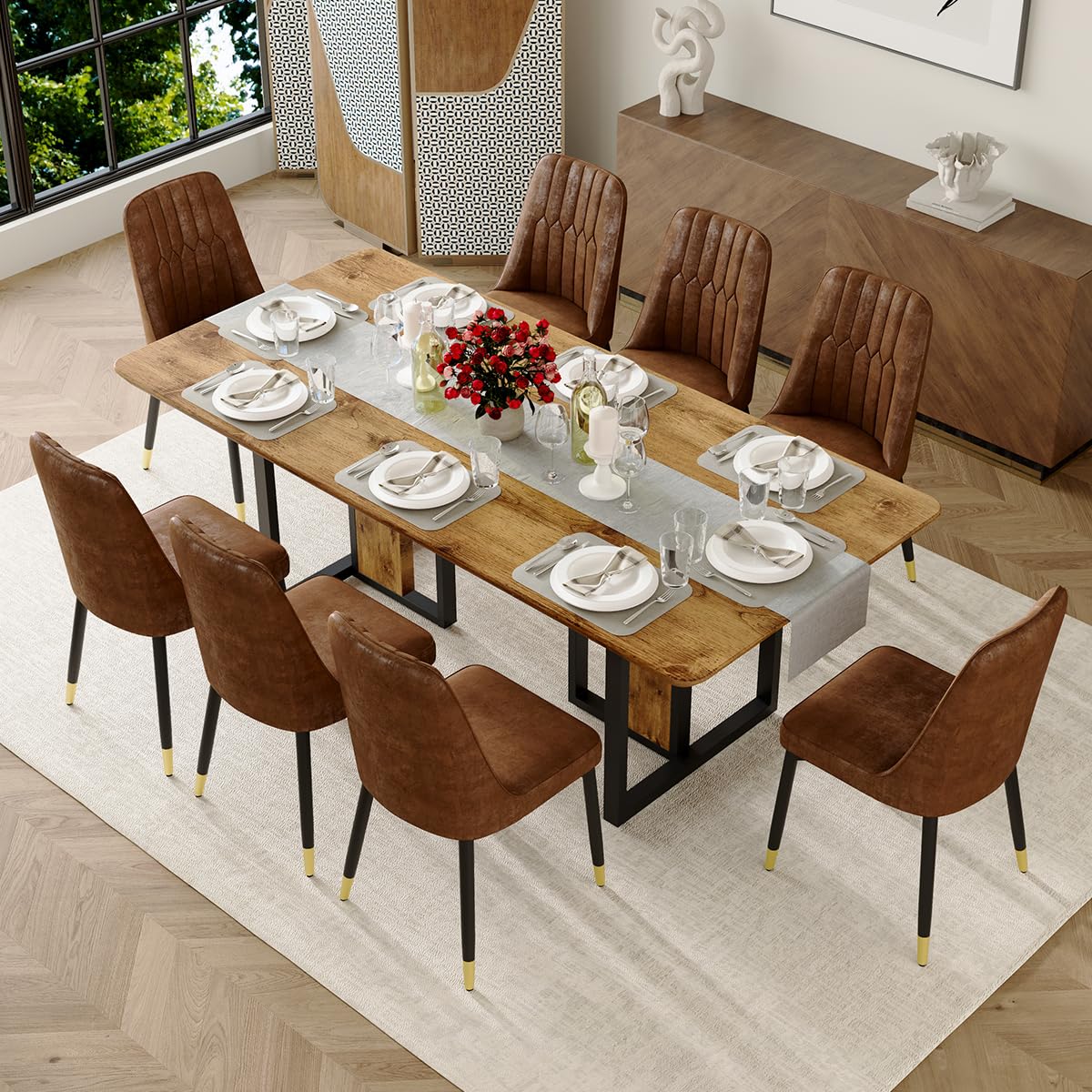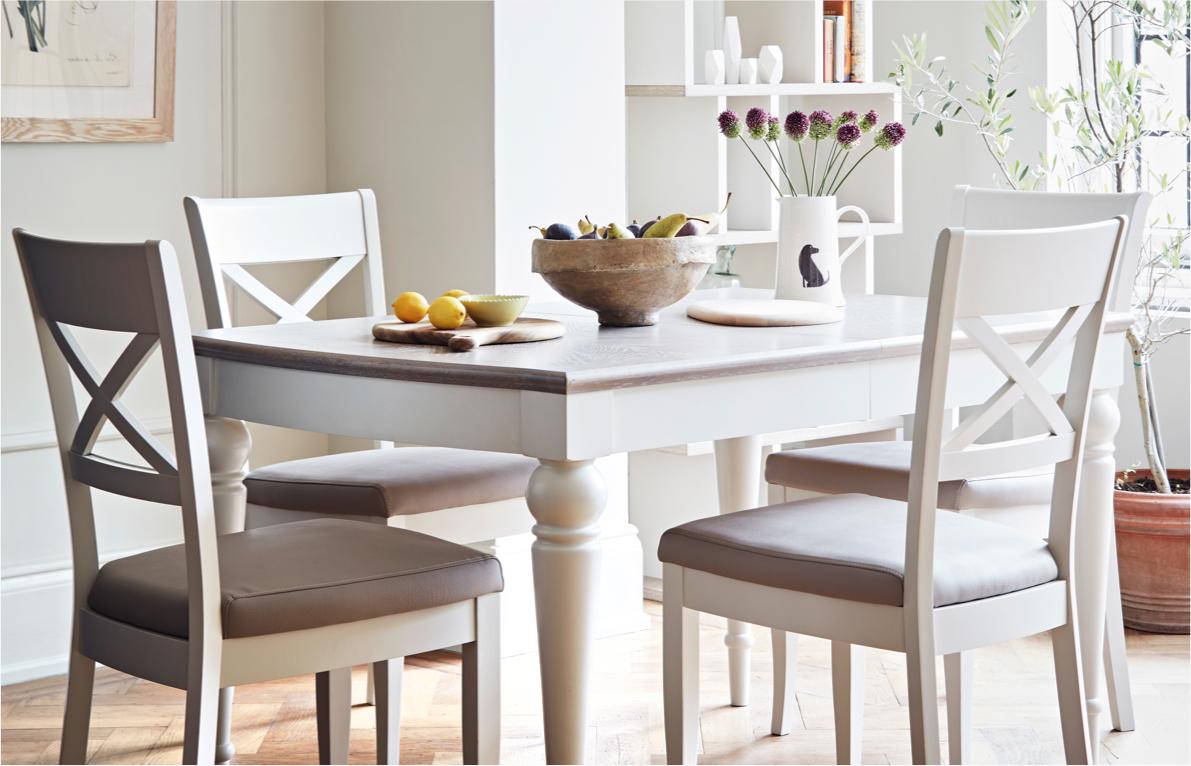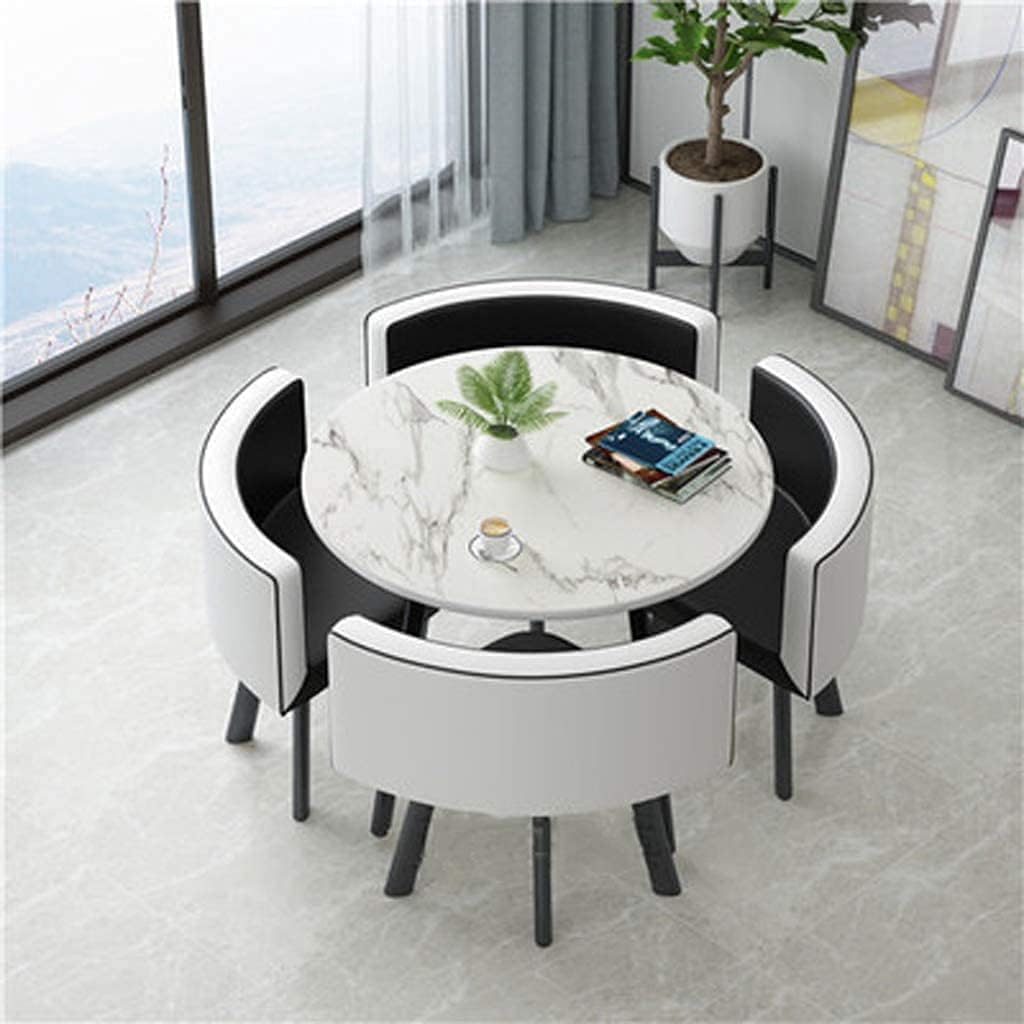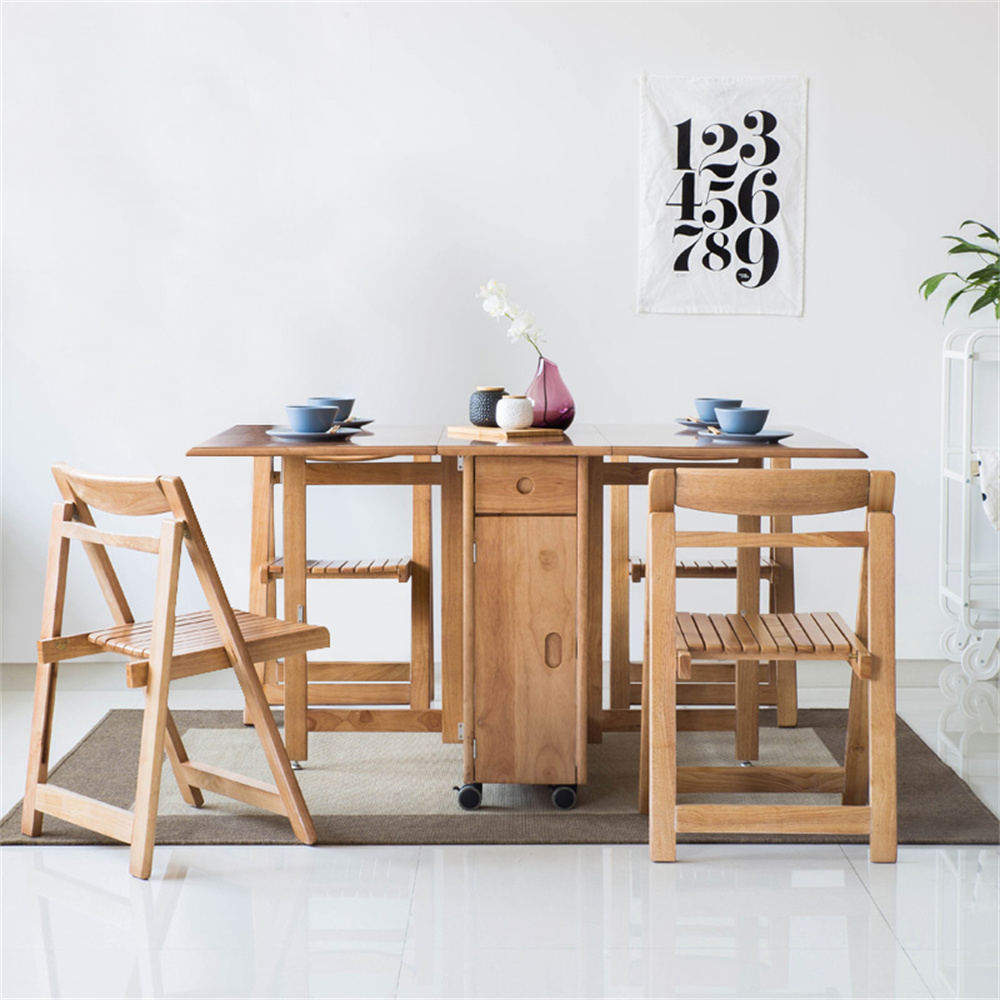Why Dining Table and Chair Height Matters
When designing or renovating a dining room, one of the most overlooked yet critical aspects is the dining table and chair height. This detail influences comfort, posture, aesthetic harmony, and even the way we interact during meals. As we move into 2025, ergonomics, hybrid living spaces, and custom furniture are more prominent than ever, making it essential to understand ideal height ratios for dining furniture.
Choosing the right dining table and chair height is not just about style; it’s about function and long-term comfort. Whether you’re selecting a dining table and 6 chair set or investing in bespoke furniture, this comprehensive guide will equip you with everything you need to know.
Standard Dining Table and Chair Height Explained
Understanding standard dining table and chair height is the foundation of creating a balanced and comfortable dining space. These height ranges are based on human ergonomics and have evolved over time to accommodate a wide range of body types and household activities. Let’s explore the exact dimensions and why they work so well.
What Is the Standard Dining Table Height?
The typical height for a dining table falls between 28 to 30 inches (71 to 76 cm). This range accommodates most adults, allowing ample room for legs while maintaining an appropriate arm level for eating or working. In contemporary homes, 30 inches is the most common height, particularly for formal or semi-formal dining tables.
Some variations include:
- Formal dining tables: Usually set closer to 30 inches for elegance and posture.
- Casual or rustic tables: Often hover around 29 inches for a more relaxed feel.
- Compact urban dining sets: May be closer to 28 inches to save vertical space in smaller homes or apartments.
This height is optimized for standard seating and daily use. If your household includes children or people who are significantly shorter or taller than average, you may want to consider adjustable or custom heights.
Standard Dining Chair Height
Chairs meant for use with standard-height tables typically feature a seat height of 17 to 19 inches (43 to 48 cm). This 10 to 12-inch differential between the tabletop and the seat ensures a natural elbow bend and unrestricted leg movement for most adults.
Important ergonomic considerations include:
- Back support: Look for a backrest that rises at least 12 inches above the seat.
- Seat depth: Ideal depth ranges from 16 to 18 inches to support the thighs without cutting off circulation.
- Seat width: An 18-inch wide seat is ideal for average adults.
Also, don’t forget that the chair’s total height (including the backrest) may affect the visual harmony with your table, especially in open-concept or minimalist interiors.
By adhering to these standard measurements, you can achieve both ergonomic function and aesthetic balance in your dining room.
How to Measure Dining Table and Chair Height Correctly
Accurate measurements are the foundation of achieving the ideal dining table and chair height balance. Measuring correctly ensures not only a stylish fit but also comfort and ergonomic harmony in your dining space. Whether you’re buying a new dining set or reassessing your current setup, this section will guide you through the essential steps to get it right.
Step-by-Step Measuring Guide
- Measuring Table Height: Use a reliable measuring tape to calculate the height from the floor to the top edge of the table surface. Place the tape perpendicular to the floor to avoid inaccurate angles. Standard tables are around 30 inches (76 cm), but always confirm the exact number.
- Measuring Chair Seat Height: Position the measuring tape from the floor directly up to the highest point of the chair’s seat, excluding cushions or upholstery unless they are fixed. Aim for a seat height between 17 to 19 inches (43 to 48 cm) to align with standard table height.
- Clearance Space Between Table and Chair: Measure the vertical space between the top of the seat and the bottom of the tabletop. A gap of 10 to 12 inches (25 to 30 cm) is recommended for optimal leg comfort and movement.
- Check the Table Apron Clearance: If your table has a skirt or apron underneath, ensure it doesn’t interfere with legroom. Measure from the floor to the bottom of the apron and subtract the chair’s seat height to confirm a minimum of 8 inches (20 cm) of knee clearance.
- Account for Additional Padding: If your chair includes a thick cushion, include that in your seat height measurement. Thick padding can increase height by 1 to 2 inches and may require adjusting your table height or cushion thickness accordingly.
Considerations for Arm Chairs
When measuring dining chairs with arms:
- Arm Height: Measure from the floor to the top of the armrest.
- Under-Table Clearance: Confirm that the armrests fit comfortably under the tabletop or apron. A clearance of at least 1 to 2 inches ensures chairs can slide under the table when not in use.
- Chair Width: Measure the widest point, especially if you’re placing multiple armchairs around the table. Ensure there’s adequate spacing between chairs and table legs to avoid overcrowding.
Pro Tips for Measurement Accuracy
- Always measure in millimeters and inches if possible to ensure flexibility for various furniture brands.
- Use a digital level tool if measuring on an uneven floor.
- Recheck measurements after any floor rug or carpet is added under the dining table.
- If purchasing online, compare your exact measurements with manufacturer specifications to avoid misfits.
With these detailed steps, you can confidently measure and assess dining table and chair height to create a more comfortable, functional, and visually pleasing dining area tailored to your home and lifestyle.
Adjustable and Custom Dining Furniture in 2025
In 2025, personalization and multifunctionality have become cornerstones of interior design, especially when it comes to dining table and chair height. With a growing emphasis on ergonomic living and flexible usage, homeowners are increasingly turning to adjustable and custom-designed dining furniture to meet diverse household needs.
Why Adjustable Heights Are Trending
Modern dining spaces are no longer limited to eating—they’re workspaces, homework zones, and virtual meeting hubs. This shift has fueled a surge in demand for adjustable-height furniture that adapts to various activities and user heights. Key reasons why adjustable furniture is dominating the market include:
- Ergonomic flexibility: Adjustable dining tables allow users to shift between seated meals and standing work positions.
- Household diversity: From children to elderly family members, adjustable heights accommodate everyone.
- Small-space adaptability: In compact apartments, furniture that can change height offers dual-use convenience.
- Design innovation: Technological advancements in hydraulics and motorized lifts have made height-adjustable tables and chairs sleeker and more reliable than ever.
Look for smart dining sets that offer remote-controlled height adjustments or locking systems to maintain desired positions.
How to Choose Custom Heights
Custom dining furniture offers more than just style—it ensures personalized comfort and health alignment. When choosing your custom dining table and chair height, consider the following categories:
- For shorter adults and children:
- Table height: 26 to 27 inches (66 to 69 cm)
- Chair seat height: 15 to 16 inches (38 to 41 cm)
- For average height users:
- Table height: 28 to 30 inches (71 to 76 cm)
- Chair seat height: 17 to 19 inches (43 to 48 cm)
- For taller individuals:
- Table height: 31 to 32 inches (79 to 81 cm)
- Chair seat height: 20 to 21 inches (51 to 53 cm)
Consult a furniture maker or interior designer to ensure these dimensions harmonize with your specific use case, room size, and design vision.
Materials and Mechanisms in Custom and Adjustable Furniture
Choosing the right material enhances the longevity and performance of adjustable furniture. Common options in 2025 include:
- Tempered glass with metal legs: Offers sleek aesthetics and is ideal for hydraulic lifts.
- Engineered wood with telescopic steel frames: Durable, sustainable, and perfect for motorized elevation systems.
- Bamboo or reclaimed wood with modular inserts: Eco-friendly and easily modified for height variation.
Additionally, the mechanism matters:
- Gas-lift columns: Smooth adjustment and easy locking.
- Crank systems: Manual but precise and reliable.
- Electric lift systems: Best for tech-integrated smart homes.
Benefits of Custom Dining Furniture
- Improved posture and well-being
- Inclusive design for all family members
- Greater satisfaction with daily use
- Unique aesthetics and personal expression
In summary, investing in custom or adjustable dining furniture ensures your dining table and chair height fits your lifestyle, promotes wellness, and evolves with your home’s functionality. This trend is set to continue dominating in 2025 and beyond.
Ergonomics and Health Benefits of Proper Dining Furniture Height
Preventing Back and Neck Strain
Poorly matched table and chair heights can cause slouching, neck craning, and fatigue. Proper height alignment promotes better posture and comfort.
Enhancing Meal Enjoyment and Family Interaction
Comfortable seating improves dining experiences, making it easier to engage in conversation and linger longer during meals.
Dining Styles and the Role of Height
Formal Dining Rooms
Formal settings benefit from standard heights to maintain aesthetic harmony and tradition.
Casual and Contemporary Kitchens
Counter-height tables (34 to 36 inches) are popular in modern homes. These pair best with chairs or stools with a seat height of 24 to 26 inches.
Materials, Styles, and Their Impact on Height Perception
Visual Weight and Proportions
Chunky wood tables can feel overwhelming in small spaces unless they are paired with slim chairs of the correct height. Transparent materials like glass visually lighten the room but still need ergonomic proportions.
Upholstered vs. Non-upholstered Chairs
Upholstery adds height and comfort but must be factored into seat height measurements. A chair with thick padding may raise the seat by 1-2 inches.
Children, Elderly, and Accessibility Needs
Child-Friendly Heights
For families with young children, ensuring safety and comfort at the dining table requires thoughtful adjustments. Consider investing in booster seats, high chairs, or junior-sized chairs with adjustable legs to accommodate growing bodies. These seating options help maintain proper posture and allow children to engage in meals with the rest of the family. Always aim to maintain a consistent 10-inch difference between the seat and table height, which promotes a comfortable elbow angle for eating and reduces strain. Choose chairs with non-slip feet, rounded edges, and easy-to-clean materials for added practicality and safety.
Additionally, selecting seating with built-in harnesses or safety bars can provide extra stability for toddlers. For shared dining spaces, modular children’s seating that can be attached or removed as needed is also becoming increasingly popular in 2025.
Accessibility for Seniors
Elderly individuals often face unique physical challenges that make standard dining furniture uncomfortable or even hazardous. When selecting seating for seniors, prioritize chairs with sturdy arms that support easy sitting and standing. An ideal seat height of approximately 18 inches ensures the knees are at a right angle when seated, reducing joint strain. Avoid chairs that are too deep, soft, or low to the ground, as these can be difficult to rise from and may increase the risk of falls.
Look for ergonomic designs featuring firm cushioning, lumbar support, and anti-slip leg caps. Lightweight but stable chairs allow easier repositioning without compromising safety. Also, consider dining tables with open-leg designs or pedestal bases that improve wheelchair access and reduce obstacles. In homes where aging-in-place is a priority, these accessibility features contribute significantly to comfort, independence, and daily ease at mealtimes.
Best Practices When Buying Dining Table and Chairs
Test Before You Buy
Before making a purchase, it’s essential to physically test the furniture when possible. Sit down on the chair, place your arms naturally on the tabletop, and assess whether your elbows bend at approximately a 90-degree angle. Check that your thighs have ample space beneath the tabletop—typically a clearance of 10 to 12 inches between the seat and the table bottom is ideal. Pay attention to how your back feels against the chair support and whether your feet can rest flat on the ground. A test session like this reveals far more about daily usability than any online description or showroom label.
Also, move around slightly while seated to simulate real-world dining activities. Ensure you don’t bump your knees into table legs or aprons. If you’re considering padded or upholstered chairs, check how the cushioning affects your seating posture.
Mix and Match Height Tips
One of the leading trends in 2025 is the eclectic, curated look—mixing different chair styles around a single table. This offers personality and visual interest but comes with a key requirement: seat height consistency. For a cohesive and ergonomic setup, all chairs should have seat heights within one inch of each other. Even small height discrepancies can create discomfort and disrupt the visual line across the dining area.
To successfully execute this trend:
- Measure each chair’s seat height precisely (excluding removable cushions).
- If mixing armchairs and armless chairs, make sure armrests can slide under the table without obstruction.
- Choose chairs with similar seat depths and backrest heights to balance comfort and appearance.
- Stick to a unifying element, like matching upholstery or leg finishes, to tie the look together.
By combining thorough testing with smart mixing strategies, you’ll achieve both comfort and trend-savvy style in your dining room.
2025 Furniture Trends Influencing Dining Table and Chair Height
Sustainable and Reclaimed Materials
In 2025, the trend toward sustainability is transforming dining furniture design. More homeowners are opting for reclaimed wood, bamboo, and upcycled metals, which often come in non-standard dimensions due to the nature of reused materials. This means custom fabrication is frequently necessary to achieve ergonomic dining table and chair height combinations. When sourcing sustainable furniture, users should work with makers who can tailor dimensions to their body types and room scale, ensuring comfort is not sacrificed for eco-consciousness.
Moreover, rustic finishes and raw textures may visually alter perceived height. For example, chunky tabletops made from reclaimed beams may look taller or more imposing in a space, so matching them with appropriately scaled chairs becomes crucial.
Tech-Integrated Furniture
Technology continues to revolutionize furniture design, and dining rooms are no exception. In 2025, tech-integrated dining tables are surging in popularity. Features like built-in USB charging ports, LED lighting, wireless charging pads, and even temperature-controlled surfaces are becoming standard. Importantly, many of these tech-forward tables also feature height-adjustable mechanisms—either manual or motorized.
Smart furniture enables homeowners to switch seamlessly between dining, working, or entertaining configurations. For example, a tech-integrated dining table might rise to bar height for parties or lower to child-friendly heights during family dinners. These innovations place even more emphasis on adjustable or matching chair heights to maintain optimal ergonomics in a multifunctional environment.
Consumers seeking these innovations should pay close attention to how these smart tables adjust and whether the included chairs support the full range of table heights. A mismatch can undermine both usability and comfort.
Tips and Buying Guides
Top Recommended Products
Explore ergonomic, height-adjustable dining sets on sites like Wayfair and Overstock. For custom woodwork, Etsy and West Elm offer trending options for 2025.
For related buying guides and measurements, check out our resources on:
- Dining Table and 6 Chair Set
- Round Ottoman Table: The Ultimate Guide to Style and Functionality in 2025
Conclusion: Final Thoughts on Dining Table and Chair Height
In 2025, selecting the right dining table and chair height is more important than ever. With evolving trends, changing lifestyles, and growing ergonomic awareness, investing in properly sized dining furniture can greatly enhance your home environment.
Whether you’re buying a standard set or customizing your furniture, remember: comfort and proportion are key. Use this guide as your blueprint for a functional, beautiful, and health-conscious dining area that will stay relevant well beyond 2025.

